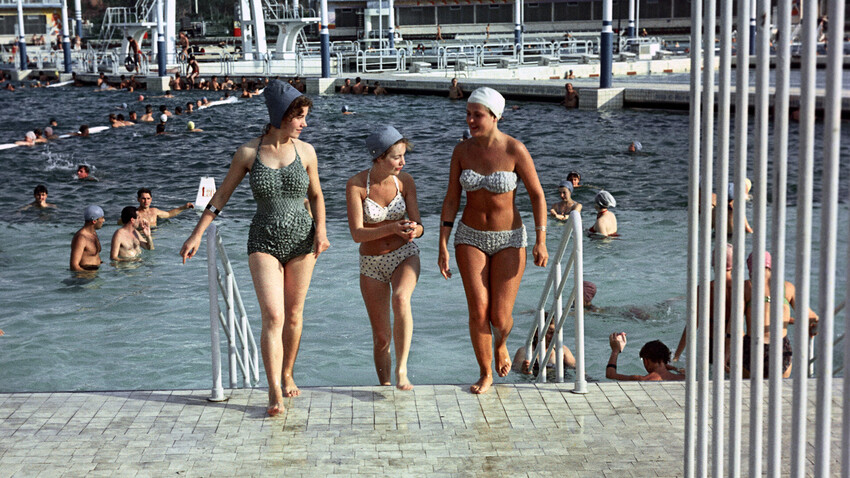
Just 32 years ago, Muscovites could swim in a pool built on the site of the Cathedral of Christ the Saviour, which opened on July 16, 1960.
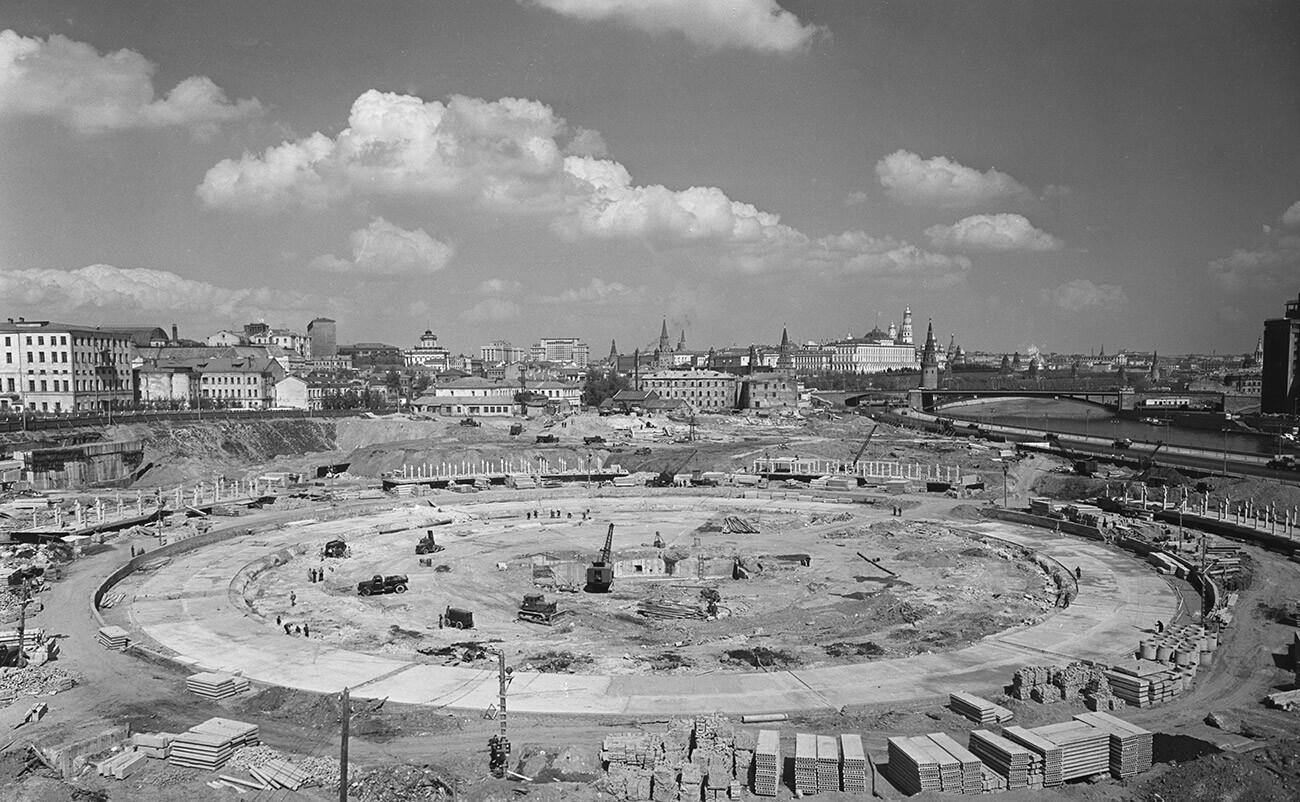
Construction of outdoor swimming pool "Moskva".
TASSBefore World War II, there was a large pit with a concrete foundation here, originally intended for the Palace of Soviets. However, the war froze construction and some structures and materials were repurposed for the needs of the front line. Despite this, the foundation remained intact and collected rainwater over the years. In the mid-1950s, the decision was made to build an open-air pool on the site.
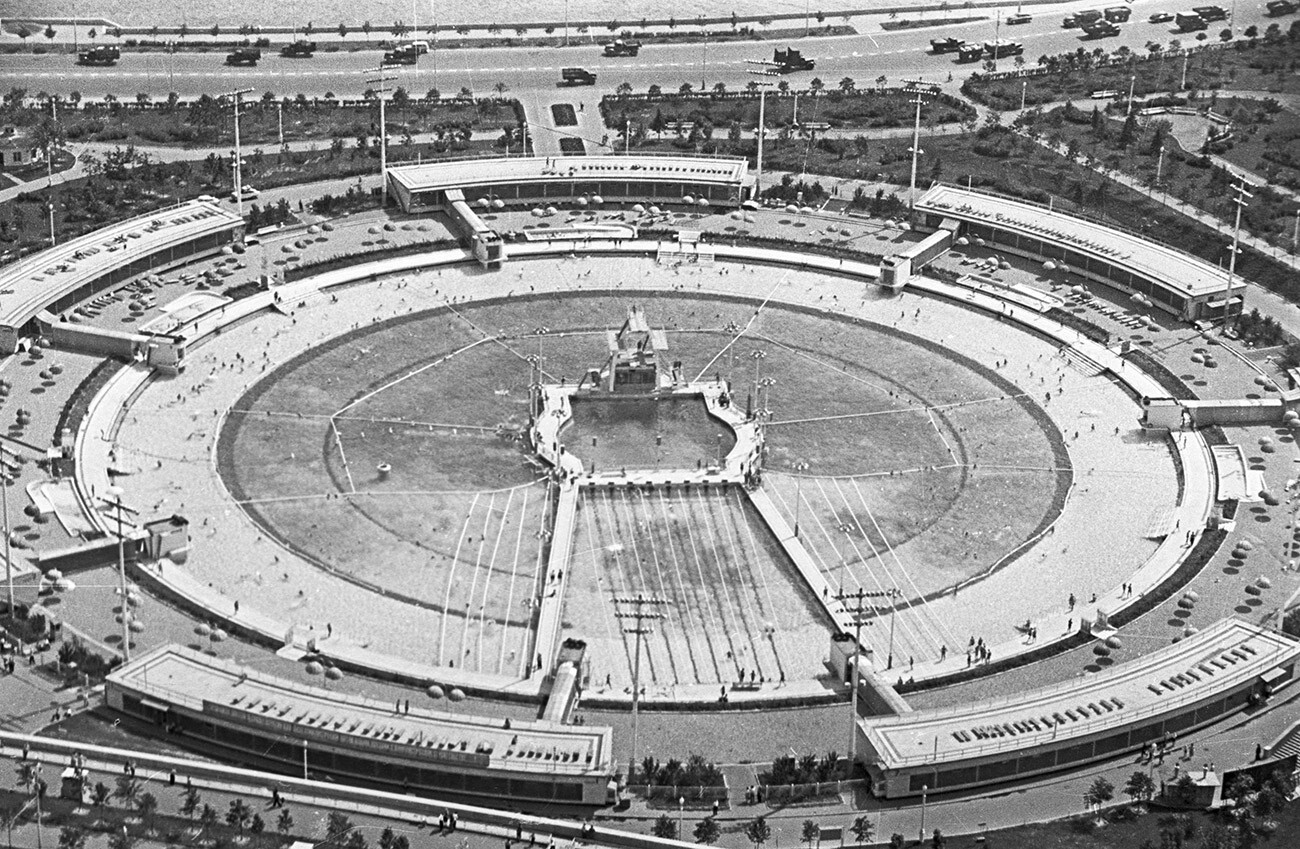
Moskva Swimming Pool.
G. Nadezhdin/SputnikThe ‘Moskva’ swimming pool was massive, measuring 130 meters in diameter with a water surface area of over 13 thousand square meters. The bottom of the pool sloped towards the center, reaching a depth of 6 meters in the so-called “sports sector” located in the center. The circular shape was maintained to preserve and utilize the foundation of the Palace of Soviets.

A 10-meter diving tower at the Moskva swimming pool.
Leonid Dorensky/SputnikThe pool operated year-round with preheated water that maintained a temperature of at least 18-22 degrees Celsius, depending on the season, providing warmth and comfort in any weather. The pool featured a diving tower with boards of different heights, located in a separate entrance area. Saunas were also available there.
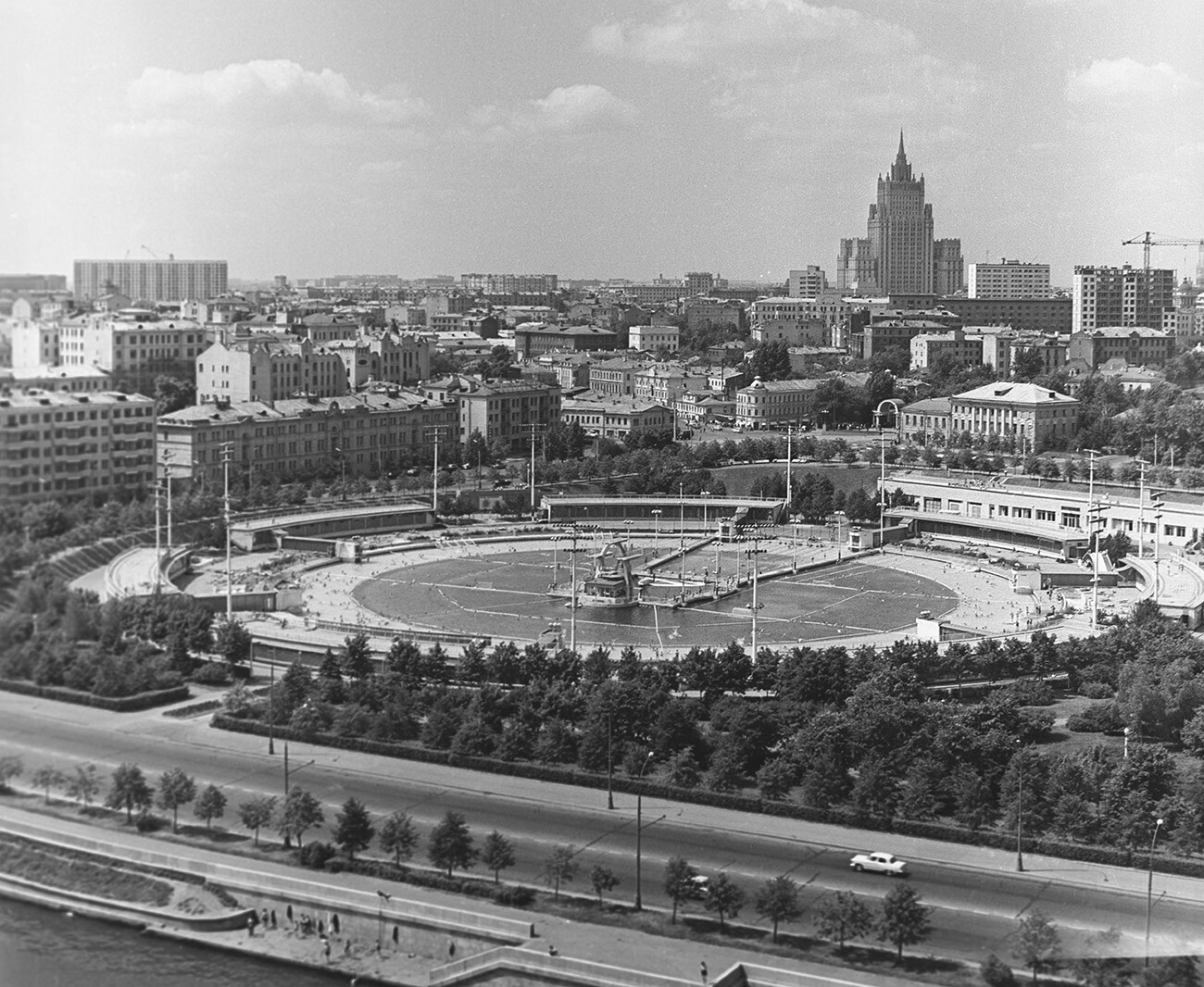
The Moskva swimming pool.
Yuri Artamonov/SputnikTo purchase tickets to swim in the Moscow pool, visitors could go to the ticket office located near the Kropotkinskaya metro station exit. No doctor’s certificate was needed to swim in the pool and rental options were available for bathing suits, swimming trunks, slippers, caps, flippers, masks and snorkels. Nonetheless, the pool’s water quality was closely monitored, with daily testing and chlorination to ensure sanitary conditions.

Occasionally, algae growth in the water required the pool to be closed for cleaning. However, the primary issue with the open-air pool located in the center of Moscow was the steam. This was particularly evident during the winter months, as a massive plume of steam rose from the heated water into the cold air.
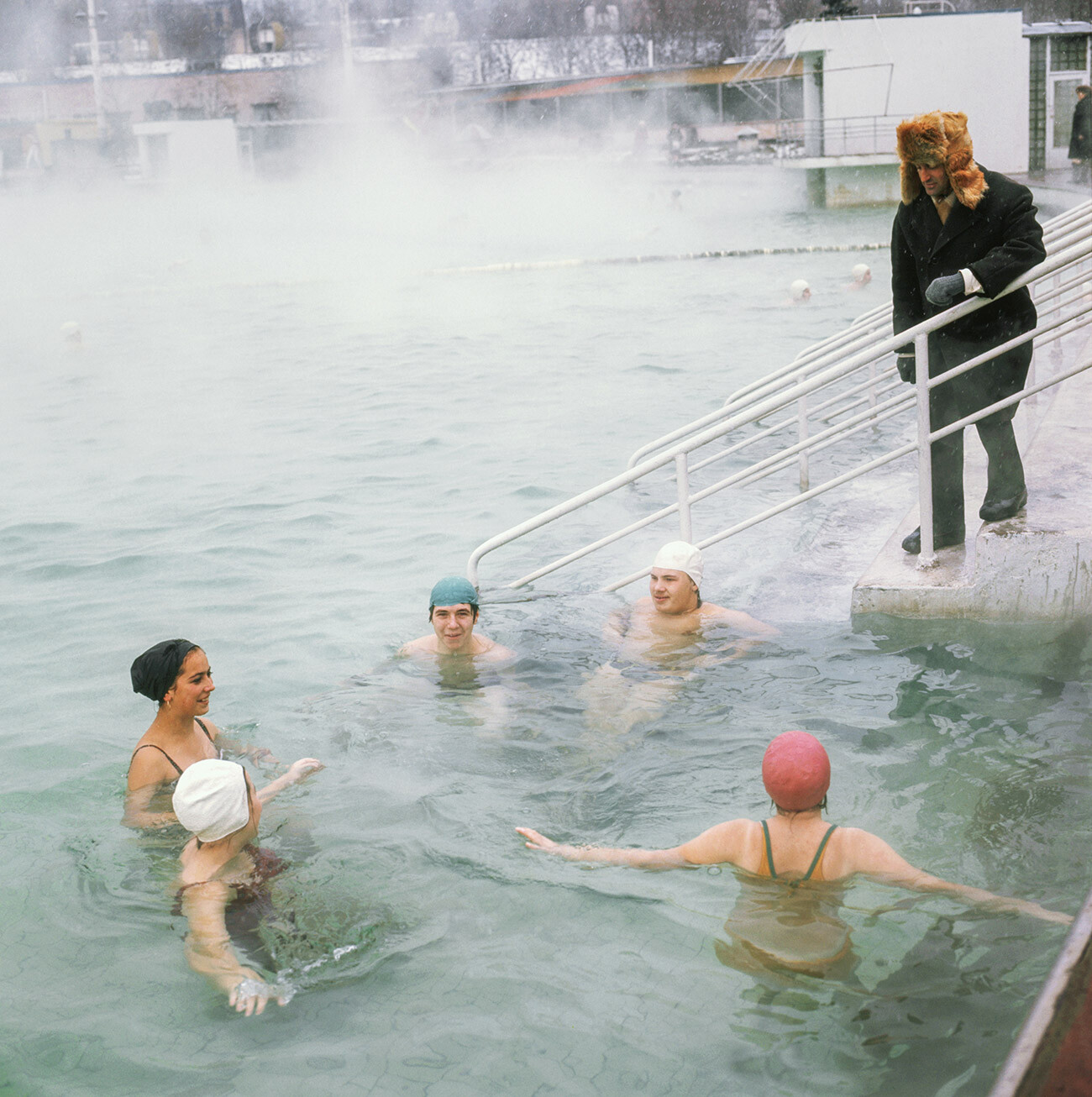
A group of schoolchildren during a swimming lesson at the Moskva swimming pool. The exact date of the photograph is unknown.
Alexei Stuzhin/TASSSwimming in such conditions was considered dangerous by many, as the poor visibility above the water made it difficult to see a person who had sunk to the bottom. This created a certain risk for visitors and inhibited the work of lifeguards.
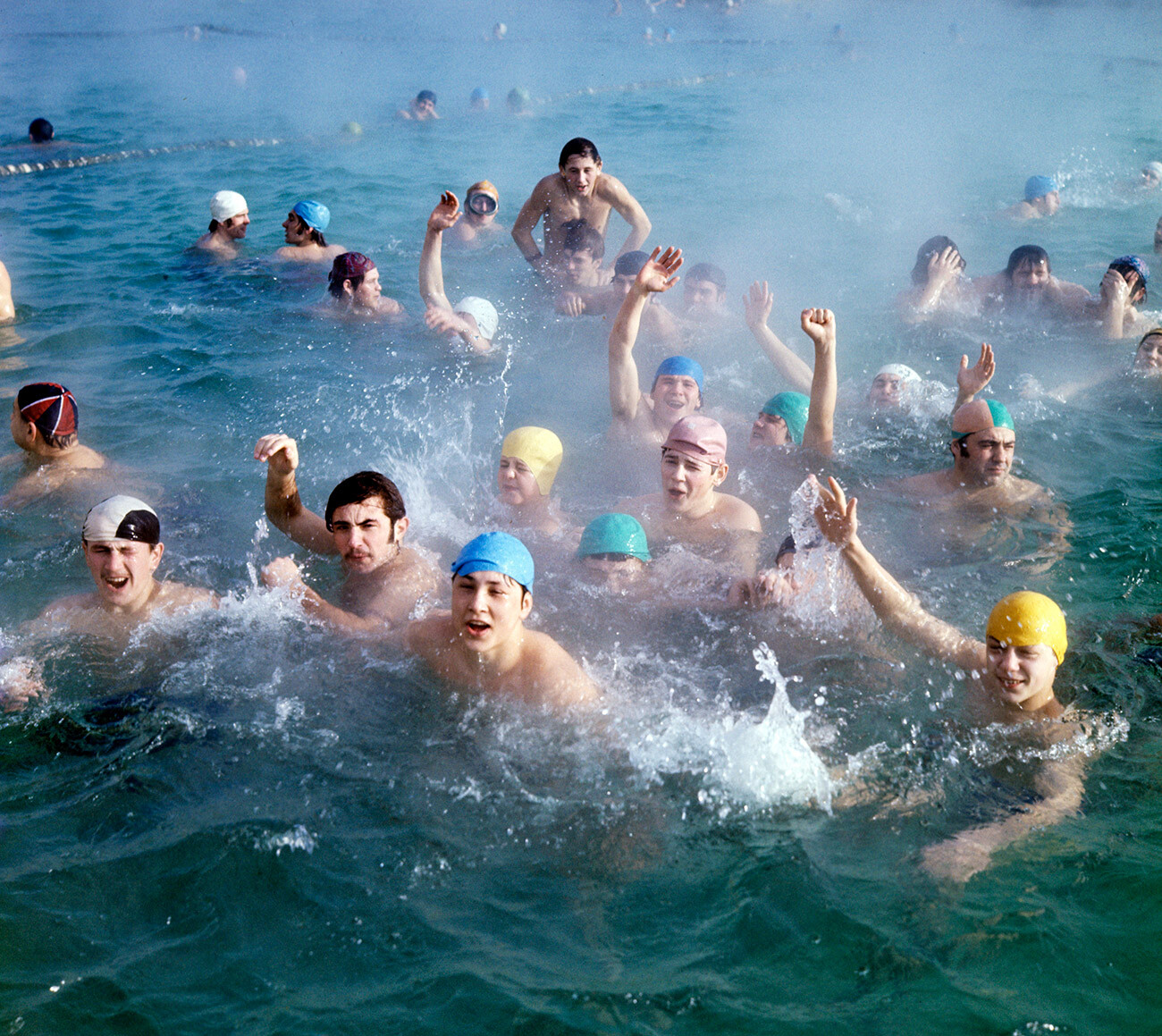
Visitors of the "Moskva" swimming pool.
M. Gankin/SputnikUrban legends started to emerge in Moscow after the opening of the pool, which damaged its reputation. Rumors circulated that people frequently drowned in the pool, particularly in winter. There were even claims that a “drowning sect” sought revenge for the construction on the site of the cathedral.
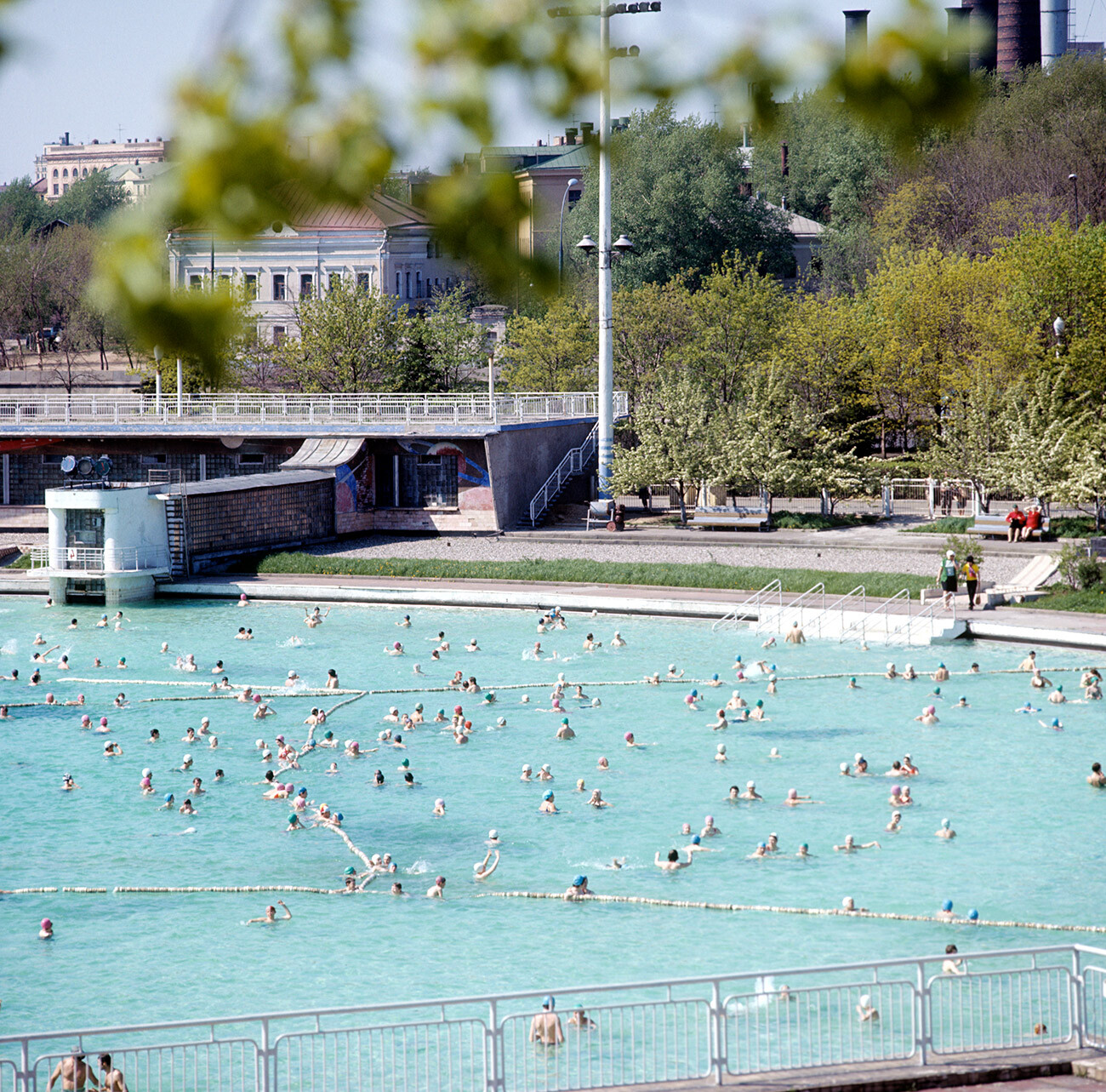
The Moskva Pool.
Valery Shustov/SputnikRumors also spread that the pool was causing corrosion in neighboring buildings and endangering the exhibits in the nearby Pushkin Museum.
After the collapse of the Soviet Union in 1991, the prices for water and electricity surged, making it unprofitable to maintain the pool. Furthermore, a public movement emerged, calling for the restoration of the cathedral that was destroyed in 1931.
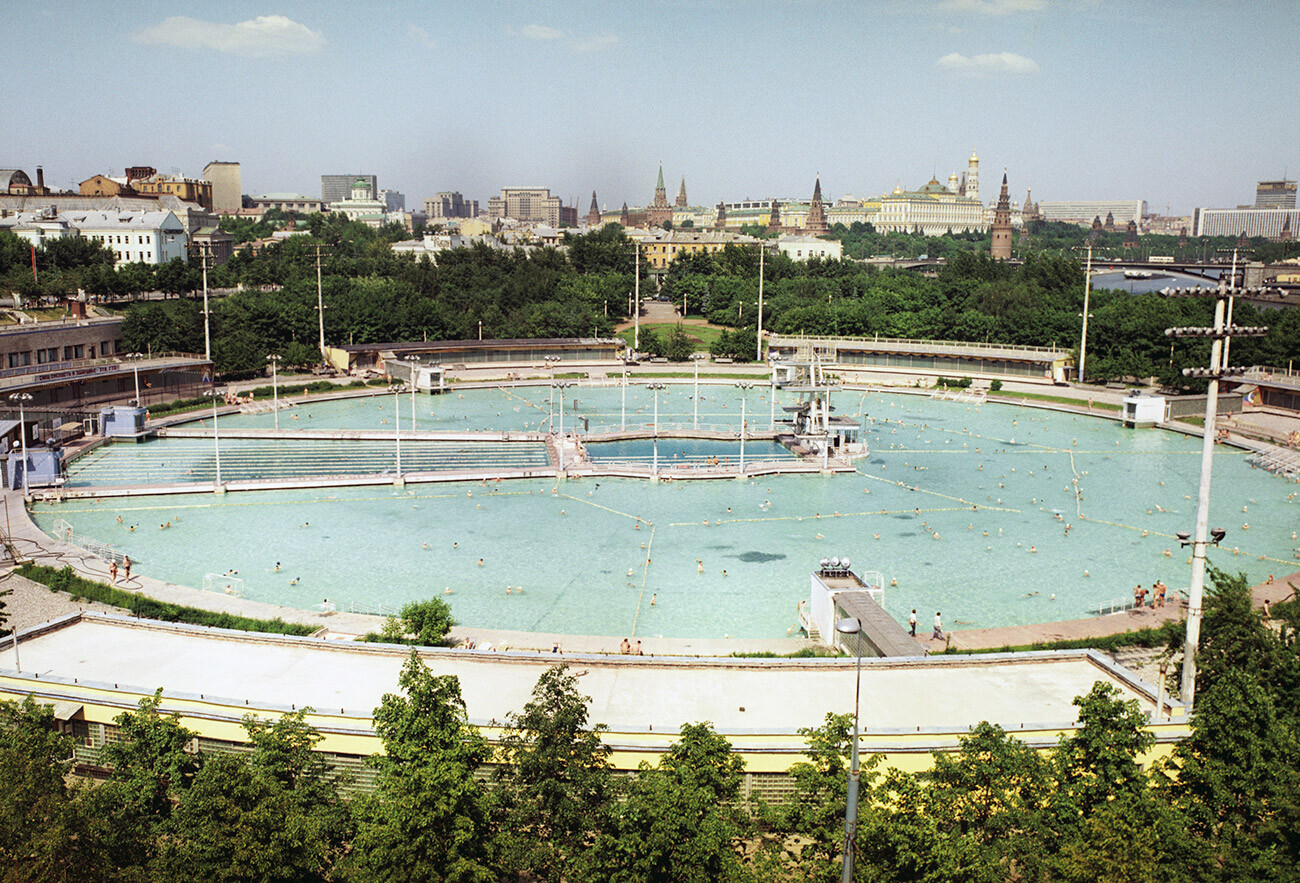
The Moskva Pool.
Boris Yelin/SputnikThe pool remained abandoned for several years after being drained and was officially closed in 1994. In its place, it was decided to restore the cathedral that had been blown up by the Soviets. On January 7, 1995, the foundation for the cathedral was laid at the site of the ‘Moskva’ pool.
Dear readers,
Our website and social media accounts are under threat of being restricted or banned, due to the current circumstances. So, to keep up with our latest content, simply do the following:
If using any of Russia Beyond's content, partly or in full, always provide an active hyperlink to the original material.
Subscribe
to our newsletter!
Get the week's best stories straight to your inbox